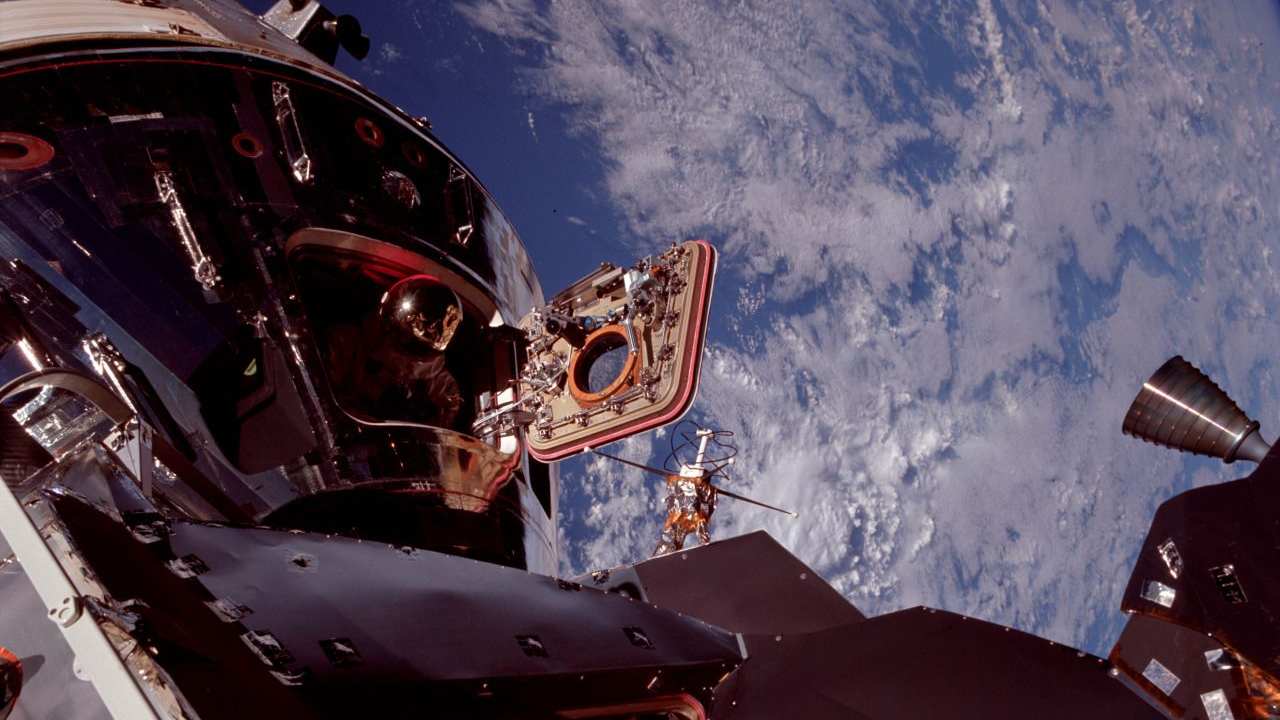March was a huge and winning month in human space exploration in 1969. Three brave astronauts were launched into low-Earth orbit by the Saturn V spacecraft in the first test mission of its kind. The Apollo 9 mission tested the vehicle that would one-day land astronauts on the Moon. The test would be the **Saturn V** ’s second mission and the third ever mission NASA carried out with a human crew onboard. Apollo 9 was the first time NASA had a working Command and Service Module (CSM) and the **Apollo Lunar Module** (ALM) fitted to a spacecraft. An Apollo 9 documentary ‘Three to Make Ready’ was released in 1969, featuring glimpses of the mission and contributions made by the three Apollo 9 astronauts — Commander James McDivitt, command module pilot Dave Scott and Lunar Module Pilot Rusty Schweickart.
As the documentary points out, the mission wasn’t just critical to a potential Moon landing. It also tested new technology and capabilities that were cutting-edge to any space agency at the time. While the tests done in space during
**the Apollo 9 mission** may seem “incidental” compared to the kind of work astronauts are doing today aboard the
**International Space Station** , they were monumental at the time, Schweickart
told Space.com. The crew of three spent ten days in low-Earth orbit testing various aspect of the spacecraft that would go to the Moon: the lunar module’s engines, navigation systems, docking manoeuvres and backpack
**life-support systems** . The module performed well, but the astronauts were forced to modify a spacewalk in the mission after one of them fell ill. [caption id=“attachment_6190621” align=“alignnone” width=“1280”] Hundred of kilometres above the Earth, astronaut Dave Scott pops his head out of the open hatch of the Apollo 9 command module. Image courtesy: Pinterest[/caption] The
**spacewalk** that was left partially untested was a contingency escape — a walk from one from spacecraft to another in case the lunar module fails or becomes unresponsive. Except for that, the mission was a raging success. Apollo 9 may not have had the glamor of circling another celestial body, but it was a crucial step in getting humankind to the moon. Crews in future Moon missions had to know and be comfortable docking and undocking the lunar module from Apollo spacecraft. These manoeuvres were crucial to ensuring astronauts landed and returned to the lunar orbit and back to Earth safely. In 1969, the Apollo 10 mission successfully simulated a landing while in moon’s orbit and the
**historic Apollo 11 mission** made the first ever touchdown on the Moon’s surface. [caption id=“attachment_6190791” align=“alignnone” width=“1280”]
Apollo 17 stands on the launchpad, the last crewed moon shot. Image: Wikimedia Commons[/caption] After the Apollo program’s success, NASA turned its focus to studying Earth and got the
**space shuttle program** (between 1981 to 2011) and the
**International Space Station** (starting in 1998) up and running to prepare for longer durations of spaceflight. Fifty years later, many space agencies (India included) have joined the race and entered into collaborations in the interest of exploring space. In February this year, NASA publicly
**renewed its vows to the moon** by announcing some new strategic interests. The first, to the return to the Moon before testing a
**mission to Mars** . Two, the
**Lunar/Deep Space Gateway** orbiting the Moon — an upgrade to the space station that doubles up as a pitstop for deep-space voyages.


)
)
)
)
)
)
)
)
)



